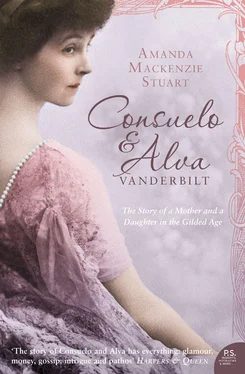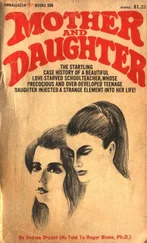Nonetheless, some of Alva’s assertions about the social position of the Smiths in New York during this pre-war period are simply wrong – saying much about Phoebe’s own social anxieties since she was probably the source of the errors. Alva maintains, for example, that her mother was on the receiving line for the Prince of Wales at a famous ball held in his honour in New York in 1860. If true, this would have put Phoebe Smith at the pinnacle of society, but the ball took place on 12 October, seven days before Phoebe gave birth to her second daughter, Julia, in Mobile, Alabama. 46 Phoebe would not have stepped out of doors, let alone travelled to New York. Similarly, Alva suggests that the Smiths’ entrance into New York circles came through the department store owner Alexander T. Stewart, but Stewart had an uneasy relationship with New York’s elite because he was a shopkeeper, and was suspected of vulgarity. The Smiths did not, as she claimed, have a box at the Academy of Music, though they may well have attended performances there; neither did they have a pew at Grace Church (one clear marker of membership of New York’s inner circle), though they belonged to another fashionable Episcopalian church, the Church of the Ascension.
On the other hand, Murray Forbes was elected to the Union Club in New York in 1861. This was a significant social success since one of the most important developments in the emerging exclusivity of New York society was the expansion of gentlemen’s clubs. Like gentlemen’s clubs in London, New York clubs were, to quote the historian Eric Homberger, ‘rooted in an ethos of exclusion’. 47 The Union Club was the first of the gentlemen’s clubs from which many others emerged as a result of splits and disagreements. Membership was limited to a thousand members and lasted for life unless one chose to resign. By 1887 an observer noted that ‘membership in the Union implies social recognition and the highest respectability’. 48 Founded purely for social (as opposed to political or sporting) purposes, the Union Club’s early membership tended to favour merchants over ‘gentlemen of leisure’, but even here, Murray Smith was several steps ahead of the Vanderbilts. The Commodore had become a member in 1844, resigned and then rejoined only in 1863. William Henry Vanderbilt would not become a member until 1868, and William K. Vanderbilt was only elected to the club after his marriage to Alva and the death of his grandfather in 1877.
The outbreak of the Civil War, however, brought real difficulties for the Smiths. They were slave owners; Murray Forbes Smith did not believe that slaveholding was wrong, and took the view that emancipation was only possible if it happened gradually. As hostilities began, tension with northern neighbours escalated. One of the first places this manifested itself was in the Union Club itself. According to the club’s historian: ‘feeling rose high against the South in New York … Many Southerners, including Benjamin [the Confederate Secretary of State] and Slidell [the Confederate Commissioner to France] resigned, and more were dropped for non-payment of dues.’ 49 Such clashes were not surprising in view of the fact that the Union Club’s membership also included General Ulysses S. Grant, General William Sherman and General Philip Sheridan, as well as twenty-four Confederate major generals. The abolitionist views of the rector at the Smith’s church, the Church of the Ascension, caused such offence to the southern members of the congregation that they all withdrew. Mounting tension affected the children directly too – this was a time when Jennie Jerome, later Lady Randolph Churchill, remembered pinching little southerners with impunity at dancing class. 50
The turning point, according to Alva, was the assassination of Abraham Lincoln just after the end of the war on 15 April 1865. The Smiths felt obliged to sign up to the general mood of mourning, putting black bows of bombazine in their windows to avoid attack. By now, Alva recalled, ‘feeling against southerners had risen from unfriendliness and suspicion to active antagonism and enmity,’ 51 scarcely surprising considering that the city had lost over 15,000 men to the war and, in a last desperate throw of the dice, Confederates attacked New York itself by setting fire to ten hotels in November 1864.
Bows in the window, it turned out, were not enough to prevent unpleasantness. After the President’s funeral, life became so difficult for the family that Murray Forbes Smith decided they should not remain in New York and sold their fine house on Fifth Avenue to a Mr McCormick of Chicago, inventor of the reaping machine. Social and business networks in New York once plaited closely together were torn apart by wartime antipathies. The cotton trade was disrupted by the war, and so was the transport system from south to north.
From 1866, Murray Forbes Smith based his business activities in Liverpool, the main English port for cotton from the southern states. That summer, when Alva was thirteen, the Smith family briefly took a villa on Bellevue Avenue in the resort of Newport, Rhode Island, where they probably met the Yznaga family for the first time. Mr Yznaga was Cuban and owned a cotton plantation in Louisiana that had been worked by over three hundred slaves before the Civil War. Mrs Ellen Yznaga was of New England stock but was thought ‘fast’ by some. These attributes were enough to disbar them from certain aristocratic New York households after the Civil War. At one point the Yznagas owned a house in New York on 37th Street, but in the post-war years their fortunes fluctuated so dramatically that they ended up living in Orange, New Jersey and the Westminster Hotel in New York. In the summer of 1866, however, they were still in a position to spend the summer in Newport. This was almost certainly the time of Alva’s fight as a thirteen-year-old with a male tormentor, for her opponent was a Yznaga houseguest. She spent much of that summer fearlessly rolling down a hill that ended in a cliff face in the company of Fernando Yznaga, her future brother-in-law; and started a long and important friendship with Consuelo Yznaga, who was about three years her junior, and almost as high-spirited.
Soon after this, and quite possibly speeded on their way by some of Newport’s matrons, Phoebe took her daughters to Paris, rented an apartment on the Champs Elysées and set up home. Although the Smiths kept smaller houses in New York throughout the period, they were based in Paris for much of the time between 1866 and 1869. Like other southern families who appeared in Paris during and after the Civil War, they were able to live well in reduced and uncertain circumstances. Apparently affluent, they were welcomed by the imperial court of Napoleon III and the Empress Eugenie, at a time when the Second Empire was at its most brilliant and glamorous. Precise gradations of wealth and social distinction of New York meant little to society circles in Paris. The Smiths were able to mix on easy terms with French aristocracy, equally untroubled as to how or when the latter had acquired their noble titles, some more recent than others. Lilian Forbes of the Forbes family, who had been a neighbour of the Smiths in New York, married the Duc de Pralin. Prince Achille Murat, distantly related to the Smiths by marriage, called at the house. The Marquis Chasseloup Loubat, who was Napoleon III’s Ministre de la Marine, and married to an American, Louise Pelier, was particularly cordial in his invitations, inviting Phoebe and Alva’s eldest sister, Armide, to select dances, and inviting the children to the Ministere de la Marine to watch processions. In Paris, Phoebe arranged a debut for Armide (who would never marry) and launched her into French society.
The impact on Alva of the move to Paris would have many consequences in the decades to follow: for American architecture, for the Vanderbilts and for Consuelo. Now in her early teens, she fell passionately in love with France, and above all with its history, art and architecture. In New York she had been just as resistant as the Commodore to attempts at formal education (‘I could not learn from impersonal pages. I wanted the contact of mind with mind. I liked the friction of thought it engendered,’ 52 she remembered later.) Now she responded to the clarity, rigour and competitiveness of French schooling which appealed to both ambition and pride; she particularly liked the French approach to learning history which she thought made sense. At one point she even demanded to go to a boarding school run by one Mademoiselle Coulon. She enjoyed this too, though she continued to prove a most difficult girl to handle and only stayed for about a year.
Читать дальше












